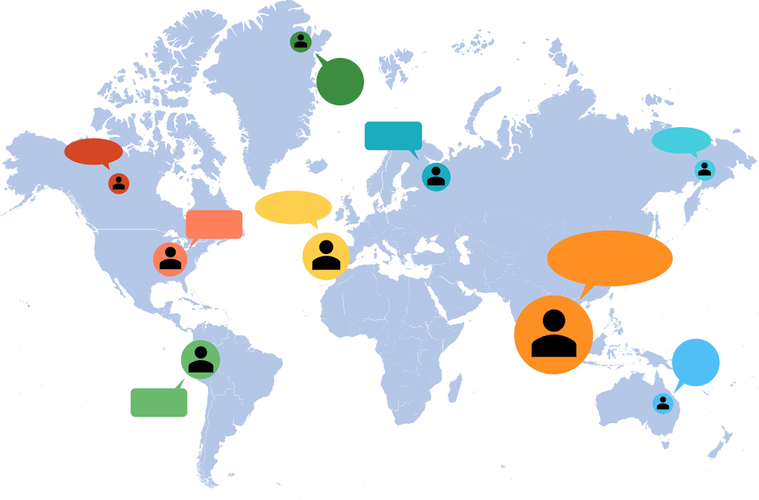So, similar to with product thinking, data-as-a-product ought to provide a delightful experience to the info scientists who want to find and use this information. Zhamak Dehghani, a ThoughtWorks marketing consultant, first outlined the time period “data mesh” as a knowledge platform structure designed to adapt the all-pervasive nature of knowledge in enterprises using a domain-oriented construction. In many instances, the centralized control of enterprise data creates undesirable bottlenecks. In a data-first enterprise ecosystem, enterprises now want to suppose about data platforms that organically support scaling. Data mesh is not a small change to the organizational structure of data administration. Data mesh, utilizing data-as-a-product, enables organizations to reveal data to all domains.

At nexocode, our information engineering experts are well-versed in implementing data mesh architectures, ready to assist you in unlocking the total potential of your knowledge. This decentralized data ownership mannequin helps models to quickly entry and analyze knowledge, regardless of location. Big organizations with years-old data teams ought to be particularly weary ahead of the choice to maneuver to Data Mesh.
Robust Safety And Federated Governance
The primary sales statistics of every group are revealed by the respective area teams, utilizing the information platform tooling supplied. When the good home staff is considering if they need to increase right into a coffee desk with a built-in speaker, they can simply examine how the espresso desk gross sales are doing. They simply talk to the kitchen furniture domain group and the new information is added to their information product. The sensible house group is now able to consider the enterprise case for good speaker coffee tables.
In truth, some of our clients worry that the unforeseen autonomy and democratization of a knowledge mesh introduces new risks related to data discovery and well being, in addition to data management. As outlined by Zhamak, one of many major issues of domain-oriented design is the duplication of efforts and abilities needed to maintain knowledge pipelines and infrastructure in every area. To handle this, the info mesh gleans and extracts domain-agnostic knowledge infrastructure capabilities right into a central platform that handles the information pipeline engines, storage, and streaming infrastructure.

As a result, corporations targeted on creating small teams building well-defined components in a service-oriented structure. By making a community of knowledge sources and using superior algorithms, knowledge mesh can help organizations make sense of large amounts of knowledge more successfully. But because it is a comparatively new concept, there are a selection of challenges that must be addressed before it may be extensively adopted. Although the current data mesh has tons of benefits, there are at present a couple of challenges that you may face.
Having learn all my issues and criticism, you might assume that I am against the Data Mesh. This isn’t totally true – I am towards adopting it in the meanwhile, contemplating the present stage of maturity in most firms. Teams handling a considerable amount of information sources and a must experiment with knowledge (in different words, rework information at a rapid rate) can be clever to assume about leveraging a data mesh.
As domains own the information products, they will quickly respond to new needs with their very own prioritization. When information domains deal with their own information merchandise, the potential for improved knowledge high quality is excessive. Each domain group has an intimate understanding of their information, making them best placed to ensure its accuracy, timeliness, and relevance, thus significantly boosting information quality. Your boss was one of many first in the business to see the potential in Snowflake and Looker.
The Challenges Of Data Mesh
The idea looks at information as a set of data merchandise distributed throughout several repositories. Data mesh has many benefits for organizations that use it to vary their enterprise processes in the path of a decentralized mannequin. The shift to Data Mesh additionally calls for a major change in thinking amongst expertise decision-makers. For years now, organizations have taken steps to eradicate any duplication of effort across their information structure. Data Mesh, as a decentralized method, can start to reintroduce some duplication of effort. Teams shouldn’t be postpone by that, as most resource-intensive work stays centralized throughout the mannequin, but it could possibly often turn out to be a point of friction that turns leaders away from the model earlier than its worth is totally realized.

Many domain experts usually are not knowledgeable in utilizing the particular area programming languages which the data mesh may be using. This can sometimes make it tough for some companies to complete their required duties efficiently. Many organizations are discovering that their central data (lake) team is more and more becoming a bottleneck. As information becomes more central to a corporation and its culture, the variety of requests, use circumstances, and experiments starts to scale up. Meanwhile, finding skilled knowledge workers to handle the central data lake is difficult, and the costs essential to keep it in top form are large – and continue to grow. The vast potential of using a knowledge mesh architecture is concurrently thrilling and intimidating for lots of within the information business.
Data mesh may be a good framework for companies that acquire corporations however don’t consolidate with them, thus wanting a decentralized method to most or even all the particular person companies’ information, Thanaraj said. This multitude results in overlapping approaches, confusion and implementations that miss the mark. In different words, some would possibly try to undertake knowledge mesh, but fall brief in implementation and, thus, anticipated benefits. So, you need to use several physical interfaces to set up a single knowledge aircraft that maps the talents of a self-serve information platform.
Advantages Of Knowledge Mesh
In this strategy, as an alternative of counting on a centralized information team to handle all elements of the data pipeline, particular person area teams are empowered to personal and handle their own information products. What the data platform team does not own in a knowledge mesh structure is the individual models, workflows, stories, and processes for a specific information area. That work now belongs to the info domain groups – the true homeowners of the data. In a data mesh paradigm, the distinction is that these instruments are open and available to all information domain teams who need them. This open data structure democratizes knowledge by giving each team a constant and dependable methodology for creating their very own data products. The future of information architectures is undoubtedly leaning towards this new paradigm, and early adopters are prone to benefit from a aggressive edge in their respective industries.
- It envisions a future in which knowledge is not siloed however instead flows freely between totally different methods, applications, and users.
- Simply put, no group could be a domain expert on all knowledge in a (large) organization.
- The picture beneath shows how different domains can share data-as-a-product, increasing agility.
- While a knowledge fabric tries to construct one administration layer atop distributed knowledge, an information mesh, however, allows distributed teams to handle data as they wish to however with common minimal governance.
- Teams shouldn’t be delay by that, as most resource-intensive work remains centralized within the model, but it can often become a degree of friction that turns leaders away from the model earlier than its value is absolutely realized.
For example, information mesh could be phased in at a department-by-department degree. The dangers and rewards of each stage of adoption ought to be recognized early within the project and communicated to all staff members. To assist manage the risks of the project, a radical, concrete, and practical change management technique have to be developed before deploying information mesh. This must embody consideration to all of the four pillars, notably federated computational governance because it units the bottom guidelines for the system as an entire. The image beneath shows how the 4 pillars of data mesh work together to open information sharing across domains whereas making certain robust governance.
Using Data Mesh, methods like fraud detection don’t need to connect with quite a few other techniques and extract the identical knowledge every day. Instead, organizations can construct domain-oriented information products that anomaly detection experts can use to create higher models and outputs. The strategy is not something that small and medium-sized enterprises can really discover priceless at full scale, as it can easily lead to a more siloed platform and ungoverned tangible structure https://www.globalcloudteam.com/. But even for smaller organizations, sure aspects similar to product thinking and end-to-end knowledge engineering competence can help improve the productivity of the data platform as an entire. Implementing data mesh may appear complex, but your business can successfully navigate this transformative journey with the best guidance and experience.
A data lake, then again, is a big place to retailer all kinds of information. An group can select to create one big central information lake (data storage) for the whole organization. Data Mesh is a concept by which knowledge is not saved centrally in one huge data storage for the entire organization, however somewhat at the teams that generate this information. Even though it’d sound easy, for a lot of companies this method is novel. Goetz stated to contemplate whether data and information governance groups are deciphering knowledge mesh into what they know — or if they are able to see data from the viewpoint of business value and use instances. Chief information officers and their teams work with the business users in these eventualities.
By following these finest practices for implementing a data mesh, you’ll find a way to ensure that your organization has the best infrastructure, goals and necessities in place to build an effective knowledge mesh resolution. Moreover, self-serve capabilities empower teams across the group to entry and analyze related knowledge independently, reducing dependencies on centralized IT teams. This enables sooner decision-making processes as teams data mesh vs data fabric can immediately access the data they want when they need it. That has an enormous impression on an organization’s ability to innovate and experiment with data-rich use instances that demand an exceptionally excessive level of information high quality. Things like Artificial Intelligence and Machine Learning, for instance, demand clear, excessive information high quality to deliver meaningful worth.
Organization And Ownership Challenges
This approach enables organizations to work far more carefully with regulators and collaborate with them as clients. Organizations can have proactive conversations with regulators to grasp what they want, and quickly tailor a data product to fulfill that requirement. Then, when a regulator needs visibility of that info, the group can give them precisely what they need immediately. It requires planning, cautious design, implementation, and an efficient coaching strategy backed by a strong enablement operate.




